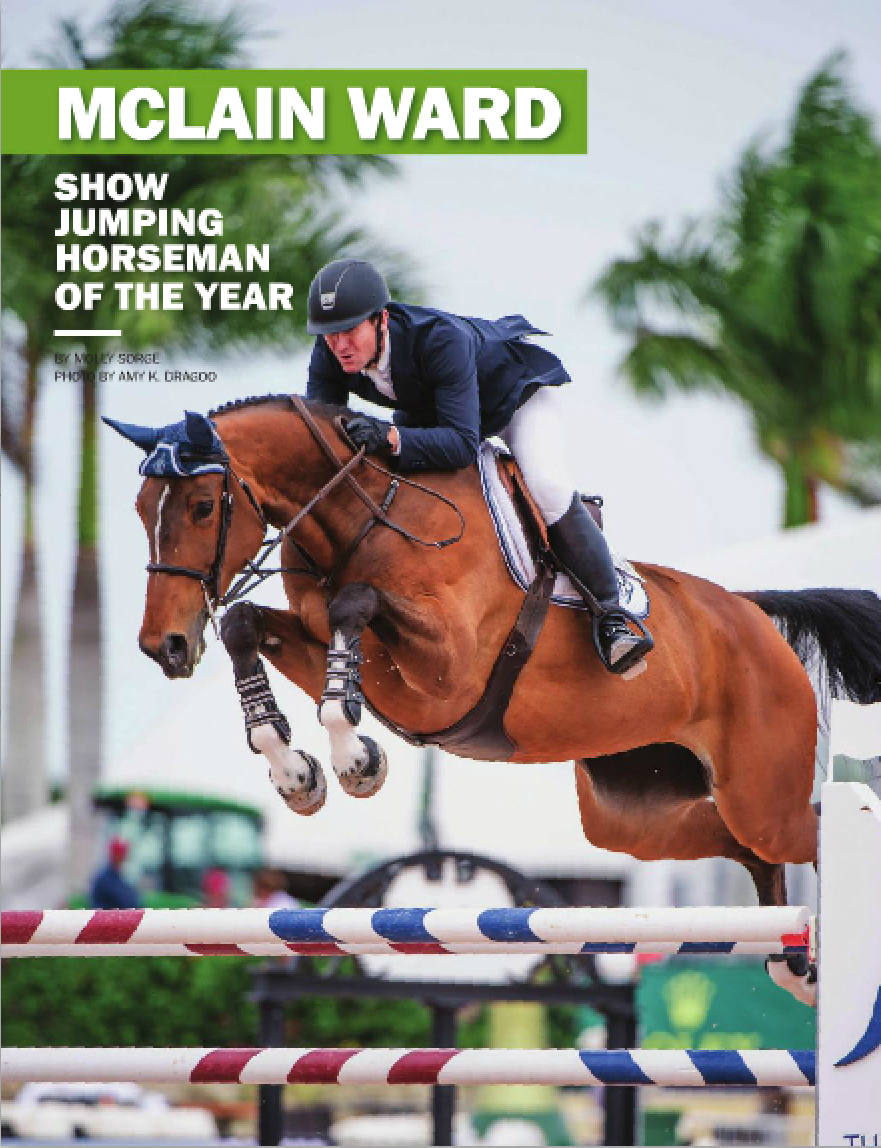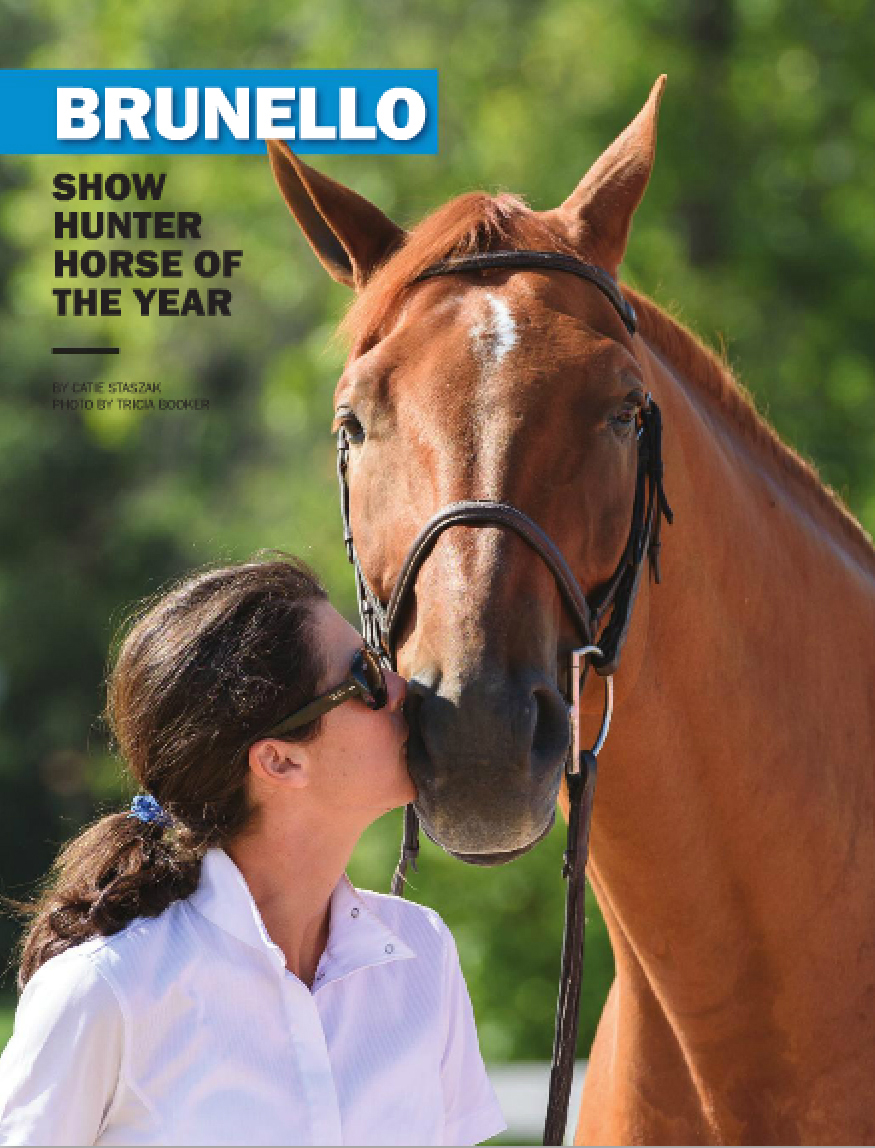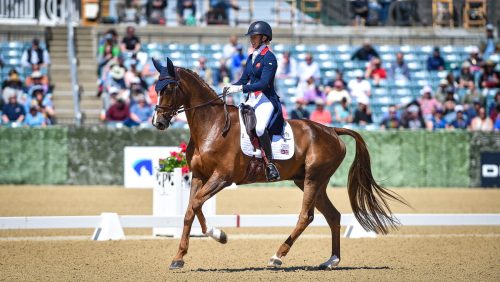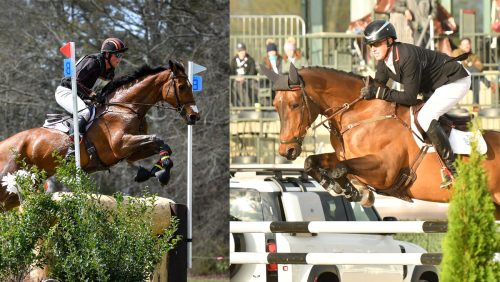Each year, in the first week of February, we publish the American Horses In Sport issue, in which we name Horses and Horsemen Of The Year, publish Between Rounds columns from experts, and collect year-end statistics in the disciplines of show jumpers, show hunters, eventing and dressage.
Wondering who we named as our 2015 Horses and Horsemen Of The Year? We’re sharing our choices and a few of the first paragraphs from each story about them here—for the full story on each, make sure to subscribe and get a copy of American Horses In Sport 2015.
|
You get the idea. The Chronicle of the Horse stopped covering flat racing many years ago, but this year the accomplishments of a muscular bay with a barely visible star and abbreviated tail captivated not only those passionate about horse sports—but also an entire nation. For this achievement, for quenching a 37-year drought and winning the inaugural Grand Slam of Racing (the Triple Crown races plus the Breeders’ Cup Classic), as well as reintroducing equine athletes and horse culture into the national dialogue and mainstream media, we honor American Pharoah as our Overall Horse of the Year. A Rising Tide Lifts All Boats An extraordinary equine athlete is an extraordinary athlete regardless of whether the horse is galloping 40 miles per hour around a track or piaffing down the centerline. Perhaps few are as cognizant of the tremendous effort that goes into such a feat—the hours upon endless hours of pre-dawn training stretching into dusky nights, the worry, the care, the management of raw talent—as fellow horsemen. Those elusive, history-defining moments when it all comes together transcend disciplines. “To have a horse win the Triple Crown after 37 years and to be able to celebrate an athlete like that is unbelievable,” said Olympic gold medalist O’Connor. “I think it shines a light on the fact that horses are tremendous athletes, how hard they work to do a job they enjoy. It’s great for all horse sports because we live in this world and can get a little ‘gerbil on the wheel’ about just doing our own deal. But to be able to celebrate an athleticism like that? It’s great. It really is; it is fantastic! That makes us all feel good, in our world.”… |
|
“I can only say this from experience, but you have to think about what you’re doing here and what you want,” Davidson told her in that conversation several years ago. “I think you’re a great rider, but these orangutans you’re trying to wrestle around aren’t really good for you.” Davidson, a World Equestrian Games and Pan American Games veteran, had once heard the same thing about his own career. “You have to take steps back to take steps forward,” he said. Smith, who had ridden a few horses at advanced then but never completed a four-star or won a CCI***, took Davidson’s words to heart. Then, during the 2012 U.S. Eventing Association Annual Meeting and Convention (Colo.), she earned the $15,0000 Rebecca Broussard National Developing Rider Grant. ADVERTISEMENT“When I got the grant—because it’s based on individuals who have team potential but also give back to the sport—I was completely shocked,” Smith said. “I didn’t even have an advanced horse then. But I was so blown away that this group of people had picked me to be a recipient of a training grant that I feel like it created a level of thinking I’d never really had before. “I went back and said, ‘How do I get to the top of the sport?’ I’d ridden a lot of horses that’d been produced to a level and sold, and then I’d ridden several horses people had trouble with, and I’d always ridden the problem horse, or the horse someone else couldn’t ride,” she added. “Even though I’d ridden nice horses, there was always a backstory on something I’d ridden at the upper levels. I decided, ‘I’m not doing that anymore. I need to focus on making my own horses.’ ” … |
|
“It just made me and the whole team feel like the program we’ve figured out for him is working,” he said. “We’d left the states on a high competitively and then had a rough patch, so to be able to get back into a program that proves that this horse is very good and competitive on the worldwide stage is exactly what we wanted to do.” … |
|
He contested the Olympic observation events for the London Games in 2012, ultimately not making the final selection, but Simon looks primed for Olympic qualification in 2016, with the summer Games in Rio de Janeiro less than eight months away. Pilot Beezie Madden of Cazenovia, N.Y., couldn’t dream up a better one-two punch than what she has in string anchors Simon and stablemate Cortes ‘C’—the two are hard to separate, and Madden says they will have equal opportunities to qualify for the Olympics—but there’s no question on whom Madden relies for indoor competition. That’s Simon’s game. The gelding has competed in four World Cup Finals and won the $150,000 Longines FEI World Cup Qualifier at the Del Mar Invitational (Calif.) as recently as October… |
|
“He’ll call Lee at 6:30 in the morning asking, ‘What if we try this bridle on that horse?’ ” said Erica McKeever, who along with her husband Lee has been the backbone of Ward’s support staff as grooms and barn managers for more than 30 years. “He’s extremely driven; he never lets up for five minutes,” Erica continued. “His mind is always going—how he’s going to find the next horse, what a horse needs to go better, how he can ride better. He works as hard as anybody, and he never stops trying to do better.” … |
|
Legolas came through his auction as a 4-year-old, and Kasselmann immediately fell for him. A P.S.I. client bought the horse, and when Legolas proved a tough charge, Kasselmann bought him back three years later. He took on Legolas as his pet project, personally training him up to Grand Prix. ADVERTISEMENT“Even as a young horse, you could see his talent for the piaffe and passage was always there,” said Kasselmann, who runs Hof Kasselmann in Hagen, Germany. “He wasn’t the biggest mover, but there was something special inside the horse. We have 250 horses here, but he’s the only one I trained… |
|
“The struggle is always the time,” she said. “For me it doesn’t take any encouragement at all [to take a hands-on approach.] I can’t help it; that’s my favorite part. If I don’t get to ride, I still want to groom my horses and feed my horses. I can’t help that part. For example, today was technically a day off for my horses, but I’ve already been in the barn for three hours. For me, riding is secondary to horses and horse care. If something had to give, it’s time in the saddle.” … |
|
On Aug. 15, Ike and Liza Boyd, who owns the charismatic chestnut with Janet Peterson, claimed their third consecutive championship in the USHJA International Hunter Derby Championships in Lexington, Ky. Heading into the final round, Ike and Boyd held a 1-point lead over eventual runners-up Kelley Farmer and Mindful. But a bold handy round earned tremendous scores of 94, 96 and 94—combined with handy scores of 9, 9 and 8 and credit for all the high options—for a cumulative score of 609 points, 21 more than Farmer. “It’s still a little surreal, it really is!” Boyd said. “I really never dreamed that we’d win it three times, but then all of a sudden we were in that position, and I just thought to myself, ‘You have to do it for that horse. You have to keep it together.’ ” … |
|
So when we came to the question of naming a Hunter Horseman of the Year this year, we thought hard and debated strongly. There were plenty of riders who collected impressive victories at big competitions. There were lots of trainers who had great years with multiple horses winning. A number of behind-the-scenes and administrative people worked hard to advance the sport. We applaud all their accomplishments, and any one of them could deservedly be named our Hunter Horseman of the Year. But this was a tough year for the hunter industry in the eyes of the general public. What we internally referred to as “Inclusive-gate”—the legal wranglings surrounding Brigid Colvin’s USEF suspension—lifted the curtain on the sad reality of “preparation” for many hunters showing. The hunter division has been plagued by a growing culture of quieting, via pharmaceutical or herbal or excessive exercise methods. Some are more detrimental to the horse than others, for sure. But if you look in the trash cans full of quieting paste tubes and sharps containers full of syringes on the show grounds, it’s sometimes hard to think in terms of “horsemanship.” … |
























